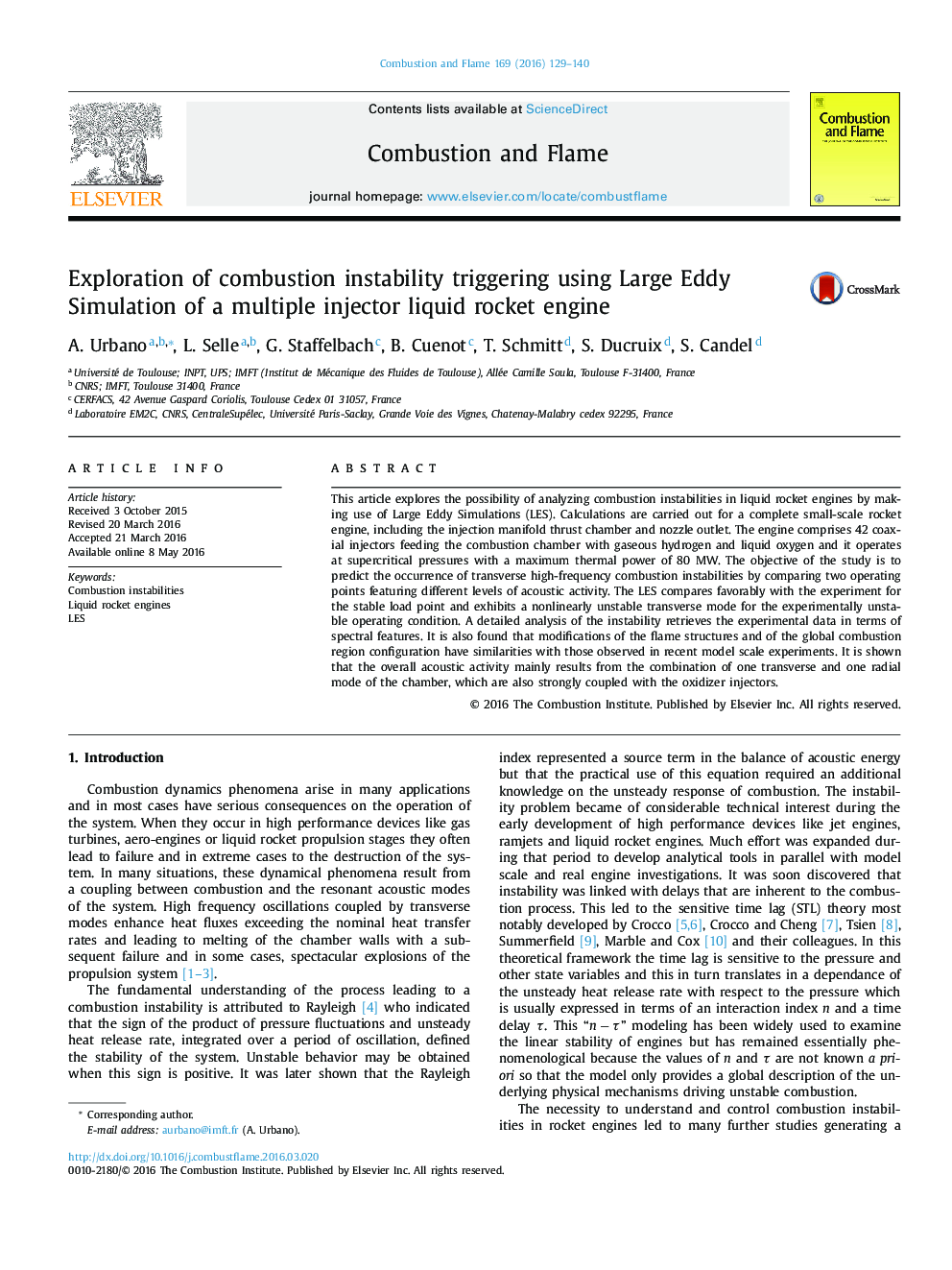| Article ID | Journal | Published Year | Pages | File Type |
|---|---|---|---|---|
| 166229 | Combustion and Flame | 2016 | 12 Pages |
This article explores the possibility of analyzing combustion instabilities in liquid rocket engines by making use of Large Eddy Simulations (LES). Calculations are carried out for a complete small-scale rocket engine, including the injection manifold thrust chamber and nozzle outlet. The engine comprises 42 coaxial injectors feeding the combustion chamber with gaseous hydrogen and liquid oxygen and it operates at supercritical pressures with a maximum thermal power of 80 MW. The objective of the study is to predict the occurrence of transverse high-frequency combustion instabilities by comparing two operating points featuring different levels of acoustic activity. The LES compares favorably with the experiment for the stable load point and exhibits a nonlinearly unstable transverse mode for the experimentally unstable operating condition. A detailed analysis of the instability retrieves the experimental data in terms of spectral features. It is also found that modifications of the flame structures and of the global combustion region configuration have similarities with those observed in recent model scale experiments. It is shown that the overall acoustic activity mainly results from the combination of one transverse and one radial mode of the chamber, which are also strongly coupled with the oxidizer injectors.
